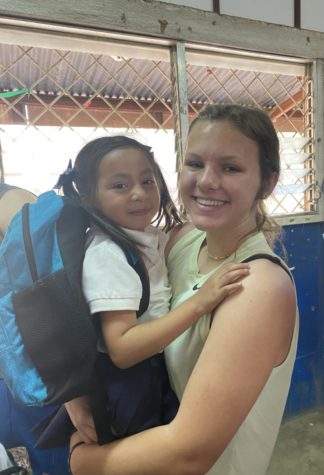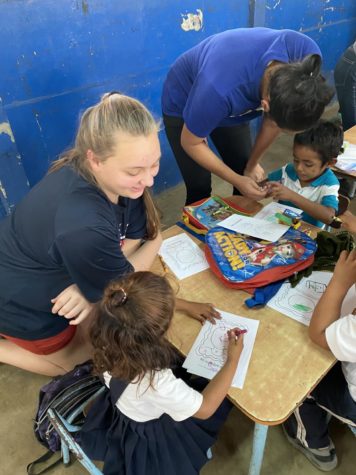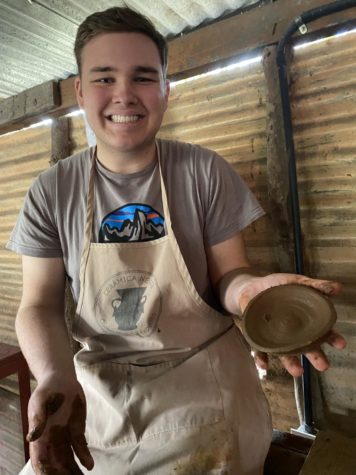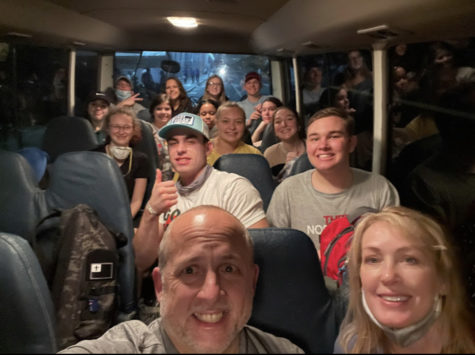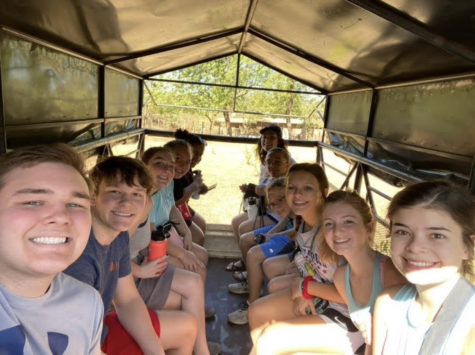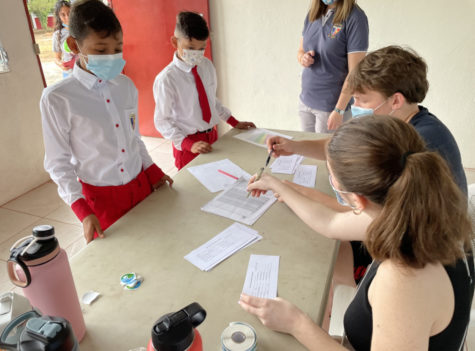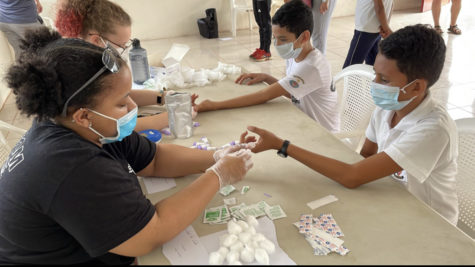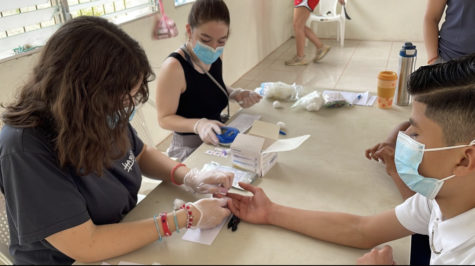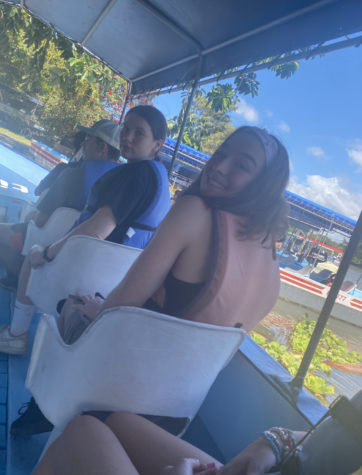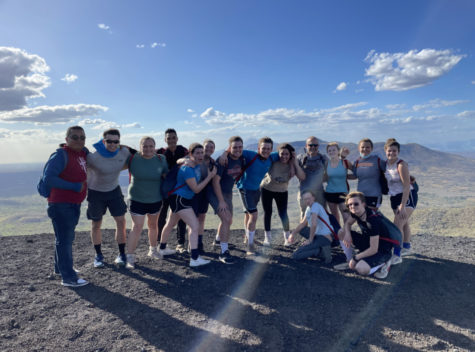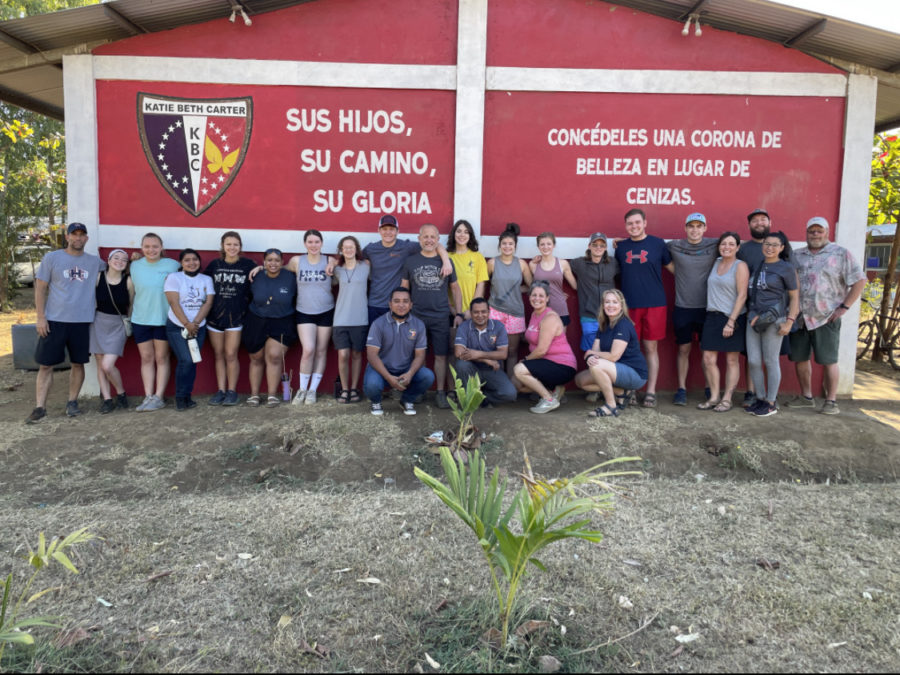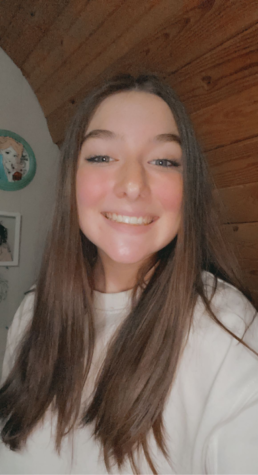HOSA & AP Spanish Students Travel to Nicaragua
This past February, HOSA and AP Spanish students traveled to the community of Tomás Borge in Nicaragua. Georga King, a member of HOSA and the Journalism staff, reports first-hand on this life-changing trip.
March 24, 2022
HOSA (our school organization for Future Health Professionals) and AP Spanish students left for Nicaragua on the 18th of February. HOSA focused on working at the clinic in León and doing health checks on all the kids in the school. HOSA students also had groups that switched between the main clinic to do health screening on adults and younger kids in the community. AP Spanish students focused on working with the kids in class; they sat in class and did the homework and assignments along with their fellow classmates in their assigned class. AP Spanish students also connected with the people around them and were able to communicate with them to a certain extent, practicing their Spanish-speaking skills.

Nicaragua is not a free country: the people there make an average income of about $35 dollars a month. They are a very poor community, and Mrs. Taylor, AP Spanish teacher and one of the sponsors for this trip, stated that“most of the structures there were [originally] just sticks and plastic with, maybe, some metal roofs, but over the past five years things have gotten a little bit better.” Now, she says, “there are more brick structures or they are slowly buying and creating more bricks. The government is also starting to implement a few projects.” Heritage’s partnership with the community of Tomás Borge began with a small number of students going to Honduras, but then in 2016 Mr. Bradford asked the Football Coach and Leadership teacher E.K. Slaughter to find a school to partner with through our leadership team. Coach Slaughter happened to have contact with someone in León, Nicaragua. The Leadership team reached out to them, and the rest is history. Coach Slaughter stated, “That kind of became our destination. But the desire really was for students to be able to experience something really powerful and life transforming.” He said he wanted his students to experience the opportunity to serve in a way that you could not do here in the United States.
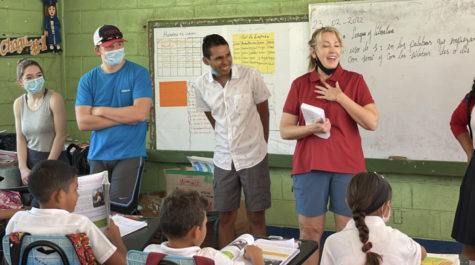
While in Nicaragua this past month, the HOSA and AP Spanish students focused on making relationships with the students at Katie Beth Carter School: both the Katie Beth and Heritage students enjoyed some time before and after school. At one point the HOSA and AP Spanish kids played a baseball and soccer game. The baseball game was an awesome time to get to know so many new people and have some fun while they were at it. One overall highlight for senior JT Halleron was the water park. JT said the highlight of the trip “was making those connections, going to the water park, and talking with the kids and us growing our bonds with the leadership team. That just meant a lot to me.” The Leadership students at KBC were a great group of kids. Some of them knew a little English, and if not they would use the help of the translators. Once we made it to the water park, everyone really started to open up and talk to each other. The water park was huge: it had four different colored slides that reached up pretty high. Each had something specific about them: the blue one was a straight drop into the water, the yellow was a twisty slide that eventually dropped you into the water, and there was a kiddy one that led to a smaller pool. I think we can all agree that the water park was one of the best moments. Another highlight that a lot of our students agreed on was walking the community, but Mr. Douglass had a specific moment that he mentioned. Mr. Douglass stated, “The highlight of my week was probably the moment that we walked in the community with the leadership kids from KB institute, and they walked us to a place where a young lady—her name is Karen—actually grew up and where she actually lived and she told her story.” Karen’s story was truly an impactful and heartbreaking thing to hear. Karen lived in a neglectful home where her mother would leave her alone with no food or water for months on end. Because of this, Karen would work for free in her neighbors houses for food and water. Where Karen’s house was pretty open, there were quite a few houses within walking distance. There was one point where Karen said that she slept outside for a while with only a blanket. This was the eye-opening experience that truly made us realize just how common this situation is in Nicaragua. Hearing Karen tell her story was a truly empowering experience for her and for us. Karen was the embodiment of a strong and powerful woman. Karen is currently living with Tammy and Jamie; Tammy was one of our translators who was with the students most of the trip, Jamie was not around due to being busy. Karen and Tammy stood hand in hand the whole time as she spoke outside of her old house. Karen now is in a foster home living her days away from her neglectful mother; she is happy and has quite the group of friends all of which are part of leadership.
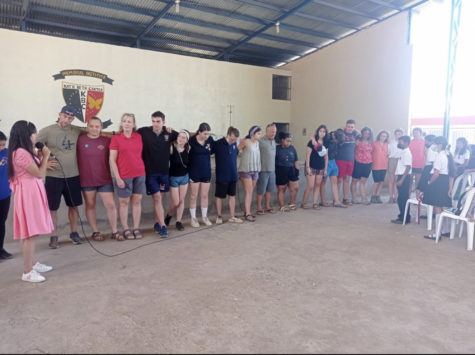
As a freshman who also went on this trip to Nicaragua , there is only one way I would describe my experiences while there: life-changing. I spoke with Coach Slaughter about how much you can change in just nine days. Coach Slaughter said something that has stuck with me since I heard him say it. He said that you come back to Heritage and you feel like everything is off, like something has changed and that you can’t put your finger on it. But nothing has actually changed, the only thing that has changed is me. Another thing we talked about was how people don’t get just how life-changing it really is, just experiencing it first-hand and how much it can switch your thinking. I went into this trip not knowing any Spanish and overall not expecting to be so moved by the experience. Some people will say that they get it and they listen to me talk about my experience down there, but they get bored and plainly don’t understand, but I don’t blame them. Another thing that has stuck with me since coming back was something Mr. Douglass and Coach Slaughter said the day before we left. They said that they wished that every student at Heritage High School could take one trip down to Nicaragua just so they could see just how life-altering it can be. The atmosphere in Nicaragua is completely different from what you see here in America. The people there are proud.You walk into their home and they will find a seat for you, no matter what it may be. During my time in Nicaragua, I experienced a lot: in fact, it’s hard to narrow down what my overall highlight was. There was the water park, and then there was walking around the community, but my personal highlight had to have been teaching the kids at Saint Isabel. Saint Isabel is a school for younger kids: they start school around ages two to three and then they go to Saint Isabel until they are 11-12 and then they move up to KBC. However there is one problem with Saint Isabel: it is not run to the best of its ability. We went to Saint Isabel to instruct the kids on how to brush their teeth and what to do if you fall and scrape your leg or arm. Walking into those classrooms with these kids who were excited to learn and get to know us was truly uplifting knowing that the kids there were just so excited to get to know us and wanted to actively build relationships with us. Even now I am keeping in contact with two friends I made down there, and their names are Roseydy and Lesilie. I text them pretty much everyday when I get the chance. We always talk about school and sometimes we talk about our families and just check in on each other. I personally can’t wait for the day that I can go back and speak face to face with them again. I think that is one thing I can look forward to.

